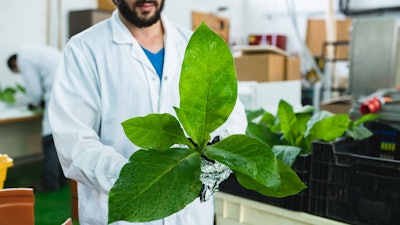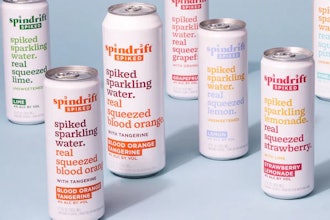
FoodTech start-up BioBetter Ltd. has assigned a new role for the much-maligned Nicotiana tabacum plant upon discovering it can overcome one of the biggest hurdles in cultured meat — scaled production.
BioBetter is repurposing tobacco plants to create the growth factors necessary for the cellular development of cultivated meat. This botanical breakthrough could significantly reduce the cost of cultivated meat and advance it rapidly to scale-up.
As numerous cultivated meat start-ups move beyond the proof-of-concept phase, they run against one of the biggest challenges facing this budding industry - developing a scalable and cost-effective production platform to make cultured meat affordable for the mass market.
Cell-derived meat requires a culture medium composed of a mix of amino acids, nutrients, and—most importantly—growth factors (GFs) without which cells cannot multiply. Currently, such media are costly due to the complexity of producing GF’s. For example, insulin and transferrin GFs are collected from livestock, making it difficult to obtain large quantities. Some can be attained via fermentation of yeast or bacteria, but those methods require expensive facilities. The purification process also is complicated and expensive.
“The Good Food Institutes determined that approximately a 100-fold reduction in insulin and transferrin costs is required to make cultivated meat economically viable,” explains Dana Yarden, MD, co-founder of BioBetter. “It is estimated that growth factors and cell-culture media can constitute 55 to 95 percent of the marginal cost in manufacturing cell-based foods.”
BioBetter harnessed the inherent advantages of tobacco plants by turning them into bioreactors for expression and large-scale production of the proteins. Plant bioreactors use renewable energy and fixate CO2. They are self-forming, self-sustaining, and biodegradable. BioBetter uses open-field plantations to meet these requirements.
“There are multiple advantages to using Nicotiana tabacum as a hardy vector for producing GFs of non-animal origin,” states Amit Yaari, PhD, CEO of BioBetter. “It is an abundant crop that has no place in the food-and-feed chain due to its extremely bitter taste and content of undesirable alkaloids. The global trend for reducing tobacco smoking also is raising concerns among tobacco growers that the crop might eventually become obsolete. Yet the tobacco plant has huge potential to become a key component in the future of food.” Tobacco plants can achieve up to four growth cycles annually and be harvested all year. This translates to more voluminous outputs per square meter of growing space.
BioBetter’s uniqueness lies in refining and highlighting the advantages of the tobacco plant platform for production on a huge scale. The start-up applies a proprietary protein extraction and purification technology that enables it to exploit nearly the entire plant, and at the same time deliver a high purity product at broad scale production.
The company currently sources tobacco plants from local growers, but the goal is to eventually source the raw material from tobacco growers globally. Based on cultivation in open fields and BioBetter’s proprietary purification technology, the cost of growth factors production is dramatically reduced, potentially bringing cost efficiency to cultured meat production.






















